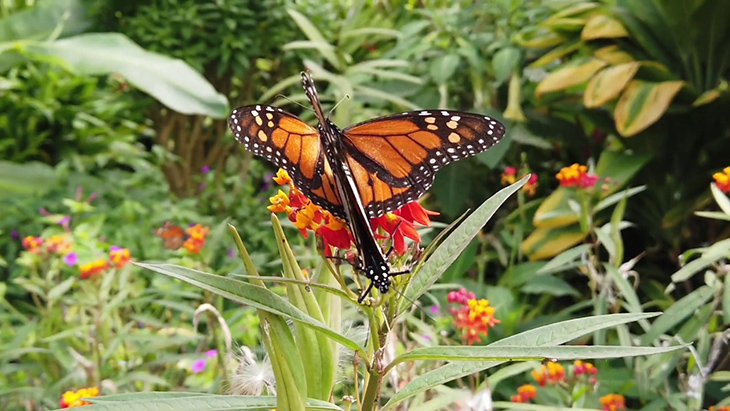
Like bees, monarch butterflies are pollinators, and the fact that they migrate from one continent to another is a huge factor in a number of ecosystems across the globe. So after the latest annual Western monarch count, which measures the population of overwintering butterflies, they were happy to announce great news for a second year in a row.
Once again, these monarch butterflies had improved numbers on their population count for another consecutive year, after they had made an incredible rebound back in the year 2021. With their former failing numbers, volunteers were able to show their excitement after these early reports implicated that these numbers have gotten better.
The survey looked at a total of 272 overwintering sites all across the coastal area of California during the months of November and December, as well as other sites within California and Arizona. The volunteers reported that their count resulted in 335,479 individual monarchs.
In fact, in the Santa Barbara and San Luis Obispo counties alone, this number tallied to more than 130,000 butterflies. Meanwhile, the San Francisco bay area also saw a comeback in numbers, with over 8,000 butterflies also reported in the nearby counties.
The numbers from this season’s count was a huge relief after last year’s count, which was worrisome with a ‘total of less than 2,000 individuals counted in 2020 – and larger than the 250,000 counted last year.’ This year’s number of 335,479 means that the number is basically “back to normal” in the sense that these were the numbers from 2000 to 2017.
Conservation biologist from the Xerces Society, the group that leads the western monarch count, Emma Pelton, “We can all celebrate this tally. A second year in a row of relatively good numbers gives us hope.”
However, due to the numerous storms that have affected California after their counting efforts may have affected the total tally. Some sites found that butterflies were also blown out of their clusters, which makes them incredibly vulnerable to the cold. But, other sites, such as Pacific Grove, the butterfly monarchs managed to fare quite well, with most of them able to survive.
Notably, by finding ways for groves to be more resilient to climate change and severe weather may actually help monarch butterfly survival, as well as keep their habitats well into the future. This may include replacing dead and dying trees, planting more native nectar sources, or mitigating possible floods in the future.
It’s important to note that while these efforts to protect and re-wild landscapes for these butterflies may be small, they’re also powerful and have proven to be quite successful.
If you would like to help protect and boost the number of monarchs, you may consider joining the mission of the Xerces Society.
They also note, as seen on their website, five different ways you can already help support and protect monarch butterflies:
1. Plant native milkweed.
2. Plant a diversity of nectar plants, ideally native to your area.
3. Stop using pesticides, or minimize risk associated with pesticide use.
4. Call on legislators to support greatly needed policies such as Recovering America’s Wildlife Act and the Monarch Action, Recovery, and Conservation of Habitat Act.
5. Contribute to community science projects that track monarchs, such as the Western Monarch Milkweed Mapper, Western Monarch Mystery Challenge, and nationwide Integrated Monarch Monitoring Program.
What are your thoughts? Please comment below and share this news!
True Activist / Report a typo


